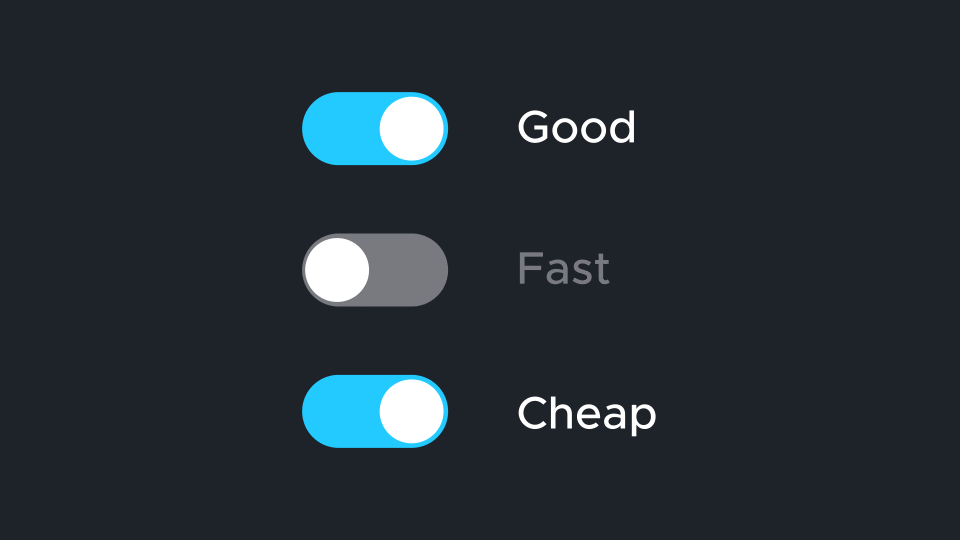Fast Launch or Future-Proofing? Navigating the Platform vs Customisation Conundrum
When it comes to building any digital product or service, there is the dilemma of how best to launch or re-launch an offering. Should an off-the-shelf solution be used to expedite delivery or is a custom solution that future-proofs the product worth the long-term investment for easier development later?


This factor applies to all areas of technical delivery including web, apps, OTT, and more. Of course, building something completely from scratch is not advisable. No matter how customised the desired solution, it will rely on various technical platforms to bring the product to life.
What matters is how those platforms work together and how well they have been integrated to harness each platform’s power, but in a way that allows for scalability and integrating new technologies later. All platforms require some degree of customisation to tailor the configuration, implementation, and experience. This can range from adjusting base architecture to adapting the company’s technical setup to simple UI branding changes.
What’s the best approach?
Using an existing platform reduces technical risk and time-to-launch but sacrifices long-term flexibility and incurs higher costs over time. A custom solution requires more upfront investment in time and development initially. However, for many companies, owning the technology stack and having control over enhancing the product are essential. It is necessary to weigh these trade-offs for each specific use case.
Flexibility
Once a platform is built, rearchitecting can be expensive if the platform requires significant changes. While vendors add new features constantly, these may not match long-term vision and needs. A custom platform can integrate seamlessly with other backend tools and systems in a way that pre-built platforms may not enable. With a custom platform, there is no reliance on a vendor that could go out of business, alter pricing, or sunset features the product depends on. Full control allows modifying the platform as needed and the ownership of the IP to build out as you see fit.
Enhancements
With a custom platform, the experience can be tailored exactly as desired to create a branded, bespoke solution that aligns to specific business needs. Data and research provide insight to enable iteration and validation of the experience to precisely meet user needs rather than a one-size-fits-all model. Building a custom platform also provides the ability to add on features like advertising, analytics, and gamification that are unavailable out-of-the-box.
Speed
Building from scratch or integrating multiple services takes more time, so off-the-shelf solutions enable launching an MVP faster. However, customisation is still required to go beyond a cookie-cutter approach and expand capabilities over time. Some platforms expedite an initial product but lack long-term extensibility.
Cost
Off-the-shelf solutions allow launching faster at a lower upfront cost by utilising existing features. Significant CapEx deters building custom platforms, so OPEX models seem more viable initially. But owning the technology stack saves money long-term compared to paying vendors monthly licensing and maintenance. More control comes at a higher initial price. Vendor solutions offer faster time-to-market with lower Capex costs.
How do you decide what is the best route?
Deciding on the best route to take is based on several factors. As with any technical choice it comes down to the typical choice of:

Do you want to deliver something Fast? Good? Cheap? The interdependencies of these choices helps you to decide the most important priority for your business. As you can only have two.
Now of course any technical decision is not as simplistic as this, but it helps you to get in the mindset to prioritise what is most important, e.g. launching something quickly to iterate, or spending time up front to set you up for future changes.
To determine where you are at as a business there are some key considerations:
Is it worth spending your budget setting yourself up for future success? Or on a quick launch that gives you less scope to tailor and improve your emerging needs?
Is there a roadmap for future enhancement? Or are you happy to let the platform own the feature development?
Do you want to innovate? Or be restricted by what the platform allows you to do?
Do you want to spend time discovering what your product requires to be successful before you make? Or assume the product gives you everything you need
Do you want to own the user experience to ensure it is relevant, useable, and accessible for YOUR audience? Or hope that these considerations have been thought through by the platform provider.
Why have the confidence to go custom?
Choosing to build a custom platform rather than using an off-the-shelf solution demonstrates the confidence and foresight needed to ensure long-term success.
Taking the time upfront to thoroughly understand your target users and map the optimal workflows enables you to create a compelling, purpose-built experience. This thoughtful approach of aligning the platform with the specific business processes avoids the risk of launching something ill-fitting that requires immediate, expensive overhauls down the road.
Though quicker to launch, generic platforms often lack the customised elements that make solutions truly effective and able to evolve with the business. Investing in customisation is investing in the ideal experience for customers and operations alike.
The key points are:
• Custom platforms better serve specific user needs and business processes rather than generic off-the-shelf platforms.
• Taking the time to fully understand users and requirements avoids costly rework later.
• A customised approach ensures the solution evolves with the changing business versus requiring overhauls.
• It is an investment into the ideal long-term customer and employee experience.
Bring your digital platform to life with UIC Digital
1. We invest the time to understand you, your brand, and your customers to design an experience that is right for them.
2. We build scalable experiences to allow you to optimise and improve as you grow, without being locked in.
3. We are tech agnostic, which means we can work with your existing tech stack or recommend a stack that best suits your needs.
When launching a new product or service, you should think carefully about whether you want to quickly launch something without any consideration, or why it’s best to create a solution that allows you to adapt and scale as you grow. Expecting an off-the-shelf platform to do everything you need without extensive customisation is not realistic.
By using solid platforms with a customisation layer, you get the best of both worlds and have control over your product development.
We can guide you on this journey to design and build a platform that works from day one and can adapt and grow as your needs change.
Want to find out more about how we work with our clients to build custom scaleable experiences? Reach out to us at sales@uicdigital.com


